Polish Pottery in the Global Market: Trends and Predictions
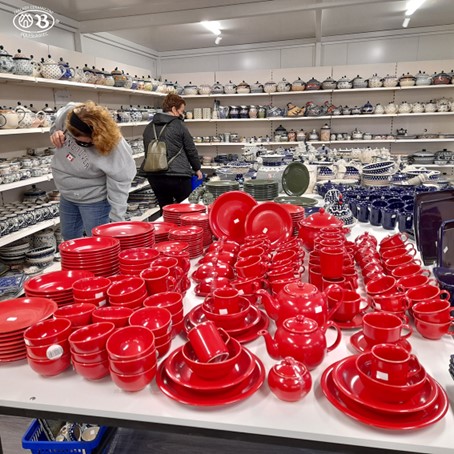
Polish Pottery in the Global Market: Trends and Predictions
Polish pottery, known for its vibrant and intricate designs, has gained a significant presence in the global market.
Its unique craftsmanship, functionality, and cultural significance have made Polish pottery highly sought-after by consumers around the world.
As the demand for authentic and high-quality pottery continues to grow, this paper aims to explore the trends and predictions for Polish pottery in the global market.
In this article, we will explore the current trends and predict their future growth. We will take a closer look at how Polish pottery has made its way into global markets like the US and Asian markets and what the future holds for the industry.
Key Takeaways
- Polish pottery is gaining popularity worldwide. The authenticity and unique designs of Polish pottery have attracted a significant number of international buyers.
- The rise in the Polish pottery trade can be attributed to trade agreements that have made it easier for Polish pottery to reach global markets.
- The advent of the Internet and e-commerce platforms opened up new channels for artisans and businesses to reach a global audience. Online marketplaces enabled Bolesławiec pottery to be accessible to customers far beyond the borders of Poland.
- Consumers now have convenient access to a wide variety of options and can easily purchase these beautifully crafted pieces from the comfort of their own homes.
- As Polish pottery continues to gain popularity and expand its presence in the global market, it is expected to captivate buyers with its stunning designs and rich cultural heritage.
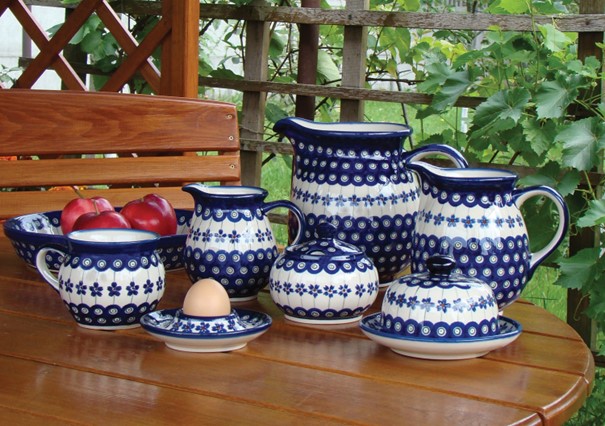
Photo from Zakladyboleslawiec
Polish Pottery's Journey to the Global Market Trade
Polish pottery, also known as Bolesławiec pottery, has taken the global market by storm with its distinctive beauty and innovative designs.
This remarkable journey of Polish pottery can be traced back to the humble beginnings of Bolesławiec, a small town situated in southwestern Poland.
Bolesławiec, with its rich clay deposits, has a long-standing tradition of pottery making that dates back to the 14th century. The artisans of this region possess a deep understanding of the craft, honed through generations of experience.
The unique clay found in Bolesławiec is known for its blue and white coloring and durability, making it ideal for producing high-quality pottery.
For centuries, Bolesławiec pottery remained a local craft, catering to the needs of nearby communities.
However, it wasn't until the late 20th century that Polish pottery began to gain international recognition.
The ceramics from Bolesławiec have become widely recognized and are in high demand among both Polish citizens and tourists searching for souvenirs.
Boasting a Ceramics Museum and an annual Ceramics Festival held every third weekend of August, Bolesławiec has solidified its reputation as a prominent hub for ceramics that entertains both locals and visitors alike.
The local community, which is proud of its history, as well as tourists from all over Poland, are drawn to these cultural events.

Photo from Zakladyboleslawiec
Nowadays, enthusiasts all around the world can enjoy Polish pottery without having to visit Poland, with the advent of international trade agreements that make it easier for manufacturers to ship their wares internationally and the growing popularity of e-commerce.
How Trade Agreements Help with the Spread of Polish Pottery
Trade agreements have played a crucial role in helping Polish pottery reach a wider global market.
Poland has entered into various trade agreements in the past decade, including the Europe Agreement with the EU and free trade agreements with EFTA countries, CEFTA countries, the Baltic states, Israel, and Turkey.
These agreements can provide Polish pottery with improved access to markets and reduced trade barriers, making it easier for Polish pottery to be exported to these countries.
One of the key benefits of these trade agreements is the elimination or reduction of tariffs and quotas. This means that Polish pottery can compete more effectively in international markets as it becomes more affordable for consumers in these countries.
In addition to tariff reductions, trade agreements often include provisions for intellectual property protection.
This is particularly important for Polish pottery, as it has unique designs and patterns that are part of its cultural heritage. Trade agreements protect these designs, ensuring that Polish pottery is distinctive and difficult for others to imitate.
Polish Pottery in the US Market
The US market has embraced Polish pottery not only for its aesthetic appeal but also for its practicality in the kitchen.
Polish pottery has gained significant recognition as a collectible item in the United States. People appreciate its unique designs and craftsmanship.
Each piece is hand-painted with intricate patterns and vibrant colors, making it a standout addition to any home decor.
One of the reasons for its popularity is the quality of the pottery. The use of local white clay and the firing process at extreme temperatures ensure that the pottery is strong and long-lasting. It can endure regular use and still maintain its beauty over time.
These dishes can also withstand the heat of microwaves and ovens and won't crack in the freezer. This combination of beauty and functionality has contributed to its growing popularity in the US market.
The growing popularity of Polish pottery in the US market can be attributed to its combination of artistic appeal and practicality.
People are drawn to its unique designs and vibrant colors while also appreciating its functionality in the kitchen. With its durability and versatility, Polish pottery has become a sought-after item for collectors and everyday users alike.
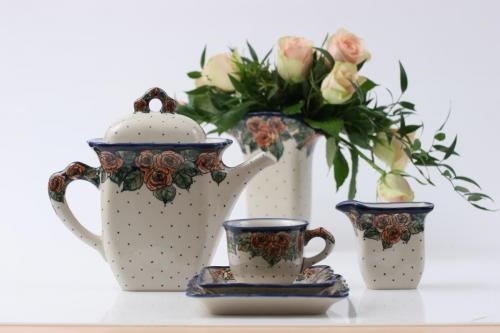
Photo from Zakladyboleslawiec
Polish Pottery in the Asian Market
Polish pottery has also entered the Asian market, primarily in South Korea. Thanks to the EU's Free Trade Agreement with South Korea, it's now easier for renowned pottery companies to trade with South Korea.
This advancement can lead to a surge in demand for Polish pottery, increased revenues for manufacturers, and more job opportunities for Polish artisans.
The trade agreement hasn't only benefited companies but also the town of Bolesławiec, known for its unique white-burning clays.
The town is now looking to expand its trade with other Asian economies, and there's great anticipation for a potential trade agreement with Japan.
The success of Polish pottery in the Asian market is a testament to the power of international trade agreements in fostering economic growth and creating opportunities for businesses.
As more countries engage in free trade, the reach and impact of Polish pottery and other products can continue to expand, benefiting both producers and consumers alike.
How Online Stores Help Expand the Polish Pottery Industry
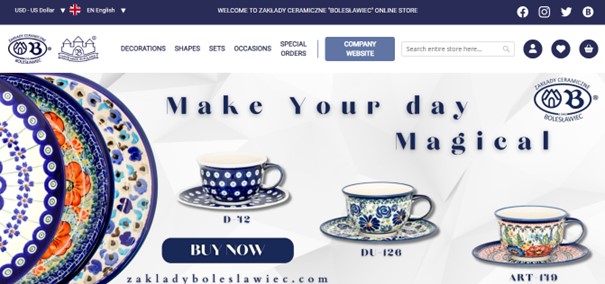
Photo from Zakladyboleslawiec
Online stores have revolutionized the sale of Polish pottery by providing a convenient platform for sellers and buyers to connect. This trend has made it easier for people all over the world to access and purchase these beautiful products.
One of the main advantages of online stores is the wide range of options they offer. Customers can browse through various designs, colors, and patterns from the comfort of their own homes.
This allows them to explore different choices and find the perfect piece of Polish pottery that matches their preferences.
Online platforms also provide detailed product descriptions, images, and customer reviews. This valuable information helps buyers make informed decisions about their purchases. They can learn about the features, quality, and durability of the pottery before making a final choice.
The convenience of online shopping is another factor that has contributed to the growth of the Polish pottery market. Customers can shop whenever and wherever they want without the need to visit physical stores.
Secure payment options and reliable shipping services also ensure a smooth and hassle-free shopping experience.
Thanks to online stores, the reach and popularity of Polish pottery have expanded globally. People from different countries can now easily access and appreciate the beauty of these unique and handcrafted products.
The trend of online stores has truly transformed the way Polish pottery is sold, making it more accessible and appealing to a wider audience.

Photo by Anja Bauermann on Unsplash
The Future of the Polish Pottery Trade
The future of Polish pottery in the global market is promising, with potential for continued growth and success.
Polish pottery, renowned for its unique designs and high-quality craftsmanship, has gained popularity and recognition worldwide.
The global market for handmade and artisanal products has been steadily growing over the years as consumers seek unique and one-of-a-kind items.
Polish pottery fits this trend perfectly, offering a wide range of patterns and designs that can satisfy various tastes and preferences.
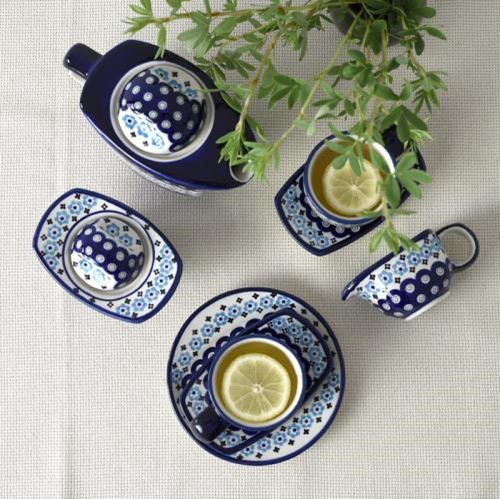
Photo from Zakladyboleslawiec
The versatility and adaptability of Polish pottery make it suitable for any home decor style, making it an attractive choice for interior designers and home decor enthusiasts.
Online marketplaces provide a convenient platform for customers to access a vast array of pottery products. This has facilitated global sales and enabled Polish pottery businesses to connect with customers from different corners of the globe.
As the demand for sustainable and eco-friendly products increases, Polish pottery has a competitive advantage.
The manufacturing process of Polish pottery is environmentally friendly, using natural materials and traditional techniques that have been passed down through generations.
Polish pottery manufacturers must keep coming up with new ideas and adjusting to the needs of a shifting consumer base if they hope to enjoy continued growth and success.
This may include expanding product lines to cater to different market segments, exploring collaborations with international designers to create modern interpretations of traditional patterns, and leveraging digital marketing strategies to reach larger audiences.
With the right strategies and continued commitment to quality and innovation, Polish pottery holds immense potential to thrive in the global market for years to come.







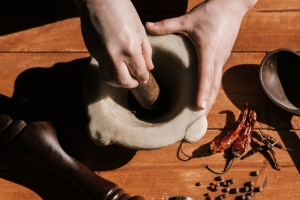



Validate your login
Sign In
Create New Account